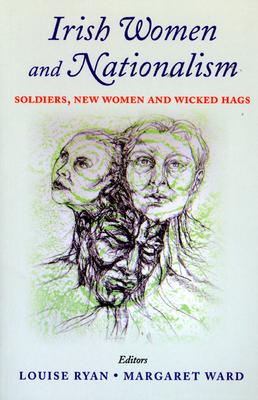Irish women and nationalism
Sally Richardson reviews Irish Women and Nationalism: soldiers, new women and wicked hags, Louise Ryan and Margaret Ward (eds), Irish Academic Press, ISBN 0-7165-2767-7, £20.00 pbk

THIS IS a wide-ranging collection of essays that fills in some of the many gaps in Irish women's historiography, from Gaelic women in the seventeenth century to the current peace process.
The nationalism in the title is rather loosely defined and the term used to cover just about any political activity aimed at achieving an independent Ireland. This is problematic. Nationalism - not to be confused with the struggle for indepenence - is an essentially conservative ideology which promotes the consolidation and stability of the nation state above other considerations, repressing class struggle and imposing an often rigid and narrow set of social values in which women are frequently defined by and confined to a purely domestic sphere.
The nationalist infusion into an otherwise radical Irish republican agenda has inevitably set up tensions between feminist demands and attempts to limit women's role. In spite of the looseness with which nationalism is defined in this book, its contributors analyse these tensions in a way that throws much new light on the workings of Irish history.
Karen Steele examines Constance Markievicz's largely neglected writings, including her plays, which offer a feminist counter-perspective to the work of dramatists such as Yeats and O'Casey.
Danae O'Regan contrasts the interrogation of gender roles in the fiction of republican feminist Rosamond Jacob with Annie M P Smithson's (highly popular) sentimental nationalist novels. Jayne Steel analyses the way women have been portrayed in film, fiction and iconography: images of Mother Ireland and Hibernia say more about their male creators than they do about actual women.
Jan Cannavan tackles the question of the extent of women's involvement in the events of 1798 and 1848, and although I think she underestimates the level of feminist consciousness in the eighteenth century, her work on the underresearched period of the 1840s is particularly valuable.
Although the rights of women under Brehon law have been much exaggerated, it appears that women, at least of the upper class, had more power and autonomy than their English counterparts. What is particularly interesting in Andrea Knox's piece is the English perception of Irish women as bold, subversive and powerful, and the concomitant implications for English policy towards Ireland.
Several essays focus on women's role in the Irish republican movement since the 1960s. Women in Armagh gaol had to fight not only against the prison regime but against the (male) republican leadership which did not think they were up to intensified protests along the lines of what was being done in Long Kesh.
Many women found themselves brought into the war zone by the conflict when their homes and streets - the spaces traditionally allotted to them by men - became subjected to raids and incursions by the British military. Louise Ryan's essay dealing with the earlier period of 1919-23 also explores the blurring of the boundaries between public and private spaces caused by war.
Margaret Ward detects a disparity between Sinn Fein's current official commitment to women's rights and participation and grass-roots apathy or even resistance, and draws parallels with the post-Easter Rising period.
There are certainly lessons for today to be learned from the past. This book shows how integral women have been in Ireland's struggle for independence and it deserves a wide readership. I hope that researchers and activists who read it will take up some of the new ideas and directions it suggests.
Connolly Association, c/o RMT, Unity House, 39 Chalton Street, London, NW1 1JD
Copyright © 2005 Sally Richardson

